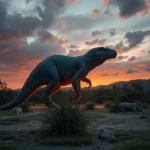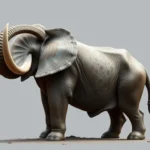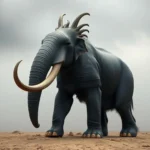The Symbolism of Thylacoleo Carnifex: The Prehistoric Lion of Australia
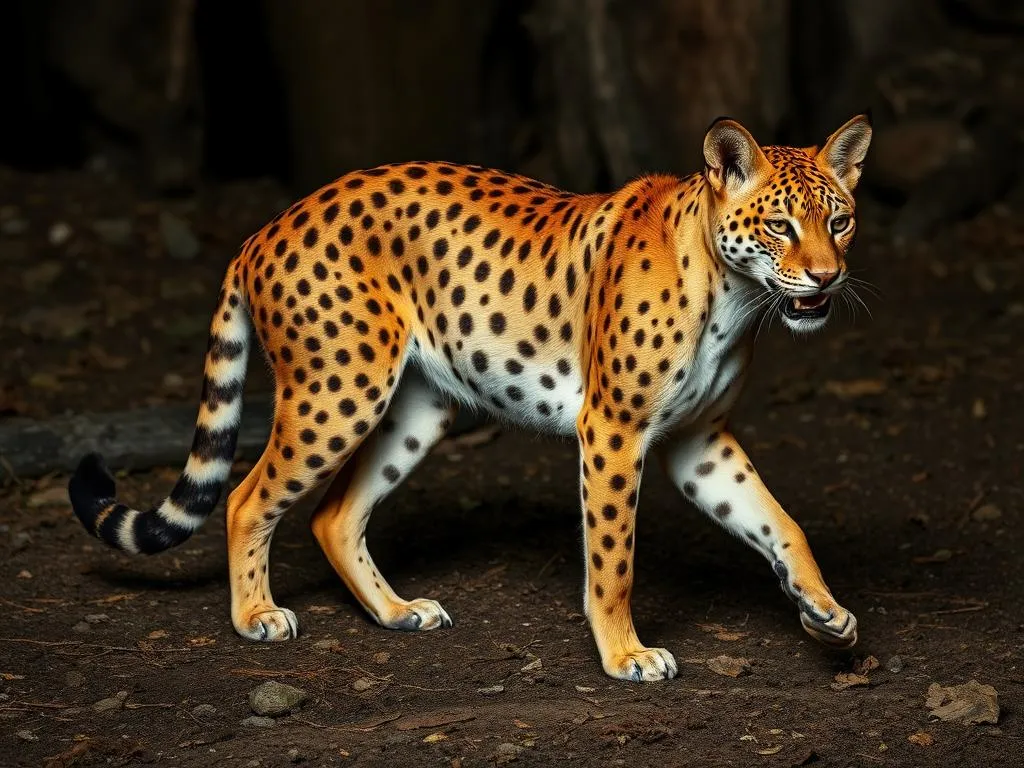
Disclaimer: Some images on this website are AI-generated artworks and may not accurately represent real animals.
The Thylacoleo carnifex, often referred to as the prehistoric lion of Australia, is a fascinating creature that captures the imagination of many. Its symbolism and meaning stretch far beyond its physical characteristics, offering insights into strength, survival, and the interconnectedness of life. This blog post delves deep into the various facets of Thylacoleo carnifex, exploring its historical significance, cultural implications, and the powerful messages it conveys in our dreams and modern interpretations.
Understanding Thylacoleo Carnifex
Overview of the Species
The Thylacoleo carnifex was a marsupial predator that roamed Australia during the Pleistocene epoch, approximately 1.6 million to 46,000 years ago. Often called the “marsupial lion,” it was one of the largest terrestrial mammalian carnivores of its time. Unlike modern lions, Thylacoleo belonged to a unique family of marsupials known as Thylacoleonidae, showcasing a blend of characteristics that set it apart from any existing predator.
This predator thrived in Australia’s diverse ecosystems, which included woodlands, grasslands, and scrublands. Fossil evidence suggests that it was a top predator in its habitat, preying on large herbivores such as kangaroos and wombats. Its extinction is linked to a combination of climate changes and human activities.
Physical Characteristics
The physical traits of Thylacoleo carnifex are striking and contribute significantly to its symbolism as a fierce predator.
| Feature | Description |
|---|---|
| Size | Up to 1.5 meters in length, similar to a modern lion |
| Jaws | Powerful, with large, serrated teeth designed for shearing flesh |
| Claws | Retractable claws for gripping prey |
| Body Structure | Robust and muscular, adapted for strength and agility |
| Fur | Likely had a dense coat, possibly patterned for camouflage |
When comparing Thylacoleo to modern big cats, it’s important to note its marsupial lineage, which sets it apart from the Felidae family. While both share predatory traits, Thylacoleo exhibited unique adaptations that reflect its ecological niche in prehistoric Australia.
Behavior and Hunting Techniques
The hunting strategies of Thylacoleo carnifex reveal much about its role in the ecosystem. As a top predator, it likely employed a combination of ambush tactics and strength to capture its prey. Its powerful jaws would have allowed it to deliver fatal bites, while its retractable claws aided in gripping and subduing larger animals.
Thylacoleo would have played a crucial role in maintaining the balance of its ecosystem. By controlling herbivore populations, it contributed to the health of plant communities and the overall biodiversity of its habitat. This balance is a significant aspect of its symbolism, reflecting the interconnectedness of all life forms.
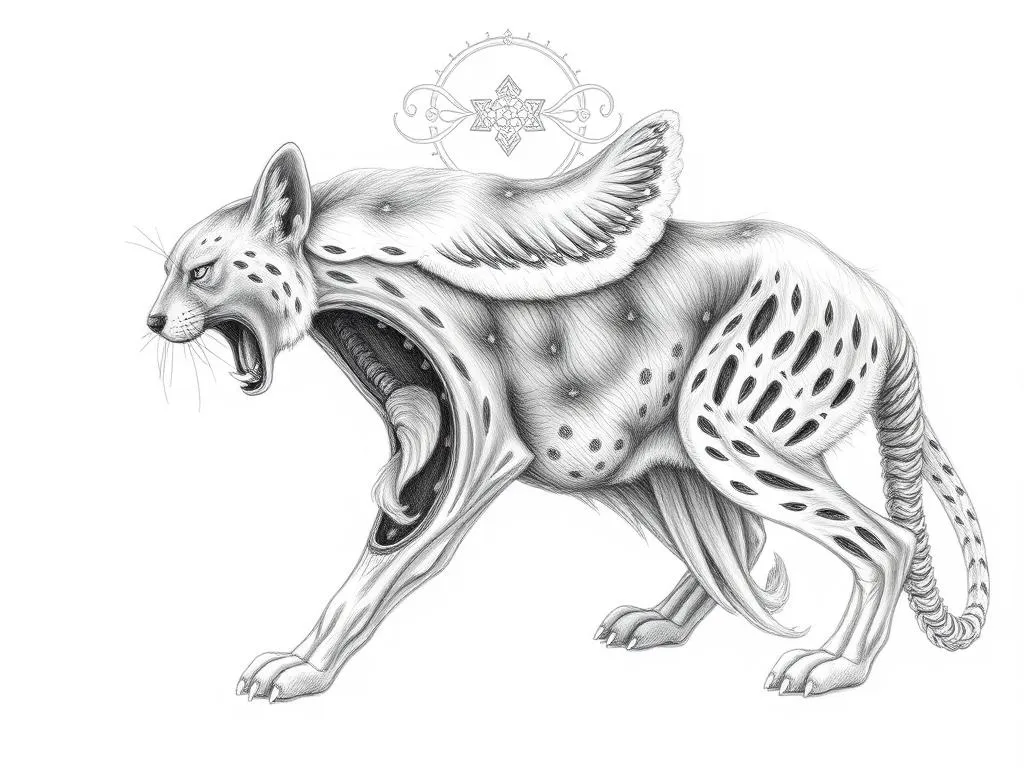
Symbolism & Spiritual Meaning
Representation of Strength and Power
The Thylacoleo carnifex embodies qualities of strength and power, representing the essence of a fierce predator. It serves as a symbol of survival, resilience, and dominance, reminding us of the primal instincts that reside within all living beings. In many cultures, large predators are revered for their ability to thrive in challenging environments, and Thylacoleo is no exception.
This symbolism resonates deeply with those who view the creature as a representation of personal strength. In challenging times, the spirit of Thylacoleo can inspire individuals to tap into their own inner power and confront obstacles with courage.
Balance Between Predator and Prey
The symbolism of Thylacoleo carnifex extends to the natural order and the delicate balance between predator and prey. It exemplifies the circle of life, where every creature plays a role in maintaining ecological harmony. The presence of Thylacoleo as a top predator ensured that herbivore populations remained in check, which in turn supported a diverse array of plant life.
This interconnectedness highlights the importance of coexistence in nature. The extinction of such a powerful predator serves as a reminder of the fragility of ecosystems and the consequences of disrupting natural balances.
Cultural Significance
Indigenous Australian cultures have long held a deep reverence for the animals of the land, including the Thylacoleo carnifex. Stories and legends surrounding this creature often emphasize its fearlessness and prowess as a hunter. These narratives serve as a means of imparting wisdom about survival, respect for nature, and the significance of every creature in the ecosystem.
Art and folklore have also incorporated Thylacoleo as a symbol of strength and resilience. Its image may appear in rock engravings and paintings, showcasing the cultural importance of this magnificent predator.
Thylacoleo Carnifex in Dreams
Interpretation of Thylacoleo Dreams
Dreams featuring Thylacoleo carnifex can hold profound meanings. As a powerful symbol, dreaming of this creature may represent personal strength and the ability to overcome challenges. It may indicate that the dreamer possesses untapped potential or is on the verge of a significant breakthrough.
Additionally, Thylacoleo may reflect instinctual fears or untamed aspects of the self. The presence of such a formidable predator in dreams can prompt individuals to confront their anxieties and embrace their primal instincts.
Messages from the Subconscious
Dreams involving Thylacoleo may convey vital messages from the subconscious. They can serve as a call to explore one’s inner power and assertiveness. For those feeling vulnerable or oppressed, this dream may signify a need to reclaim personal strength and confront challenges head-on.
| Dream Theme | Interpretation |
|---|---|
| Strength | A reminder of personal power and resilience |
| Fear | Exploration of instinctual fears and anxieties |
| Assertiveness | Encouragement to embrace courage and take action |
| Transformation | Indication of significant personal growth or change |
Understanding these themes can help individuals navigate their feelings and experiences, ultimately leading to greater self-awareness and empowerment.
Modern Interpretations
Thylacoleo in Popular Culture
The fascination with Thylacoleo carnifex extends into modern culture, where it is often depicted in media, literature, and art. Documentaries and educational programs highlight its intriguing characteristics, contributing to a growing interest in prehistoric creatures. This curiosity often translates into artistic representations, where Thylacoleo is portrayed as a symbol of strength and wonder.
In literature, references to Thylacoleo can evoke themes of survival and the primal nature of humanity. Such narratives serve to remind us of our connection to the natural world and the lessons we can learn from extinct species.
Symbolism in Conservation Efforts
Today, the symbolism of Thylacoleo carnifex serves as a poignant reminder of the fragility of ecosystems and the importance of conservation efforts. As we face the consequences of climate change and habitat destruction, the extinction of Thylacoleo highlights the urgent need to preserve biodiversity.
This symbolism encourages us to reflect on the interconnectedness of all species and our responsibility to protect the environment. By learning from the past, we can work towards a future that values and respects the delicate balance of nature.
Key Takeaways
- The Thylacoleo carnifex symbolizes strength, resilience, and survival in the face of adversity.
- It represents the balance between predator and prey, emphasizing the interconnectedness of ecosystems.
- Indigenous cultures hold Thylacoleo in high regard, reflecting its cultural significance and role in folklore.
- Dreams of Thylacoleo may indicate personal strength, fears, and a call to assertiveness.
- The creature’s legacy serves as a reminder of the fragile nature of ecosystems and the importance of conservation efforts.
Conclusion
The Thylacoleo carnifex has left an enduring legacy in our cultural consciousness, captivating our imaginations and inspiring reflection on themes of strength, balance, and survival. Its symbolism resonates deeply, inviting us to explore our own inner power and connection to the natural world.
As we delve deeper into the world of prehistoric creatures, we can uncover valuable lessons about respect for nature and our place within it. The story of Thylacoleo serves as a bridge between the past and the present, urging us to preserve the delicate balance of life for future generations.

